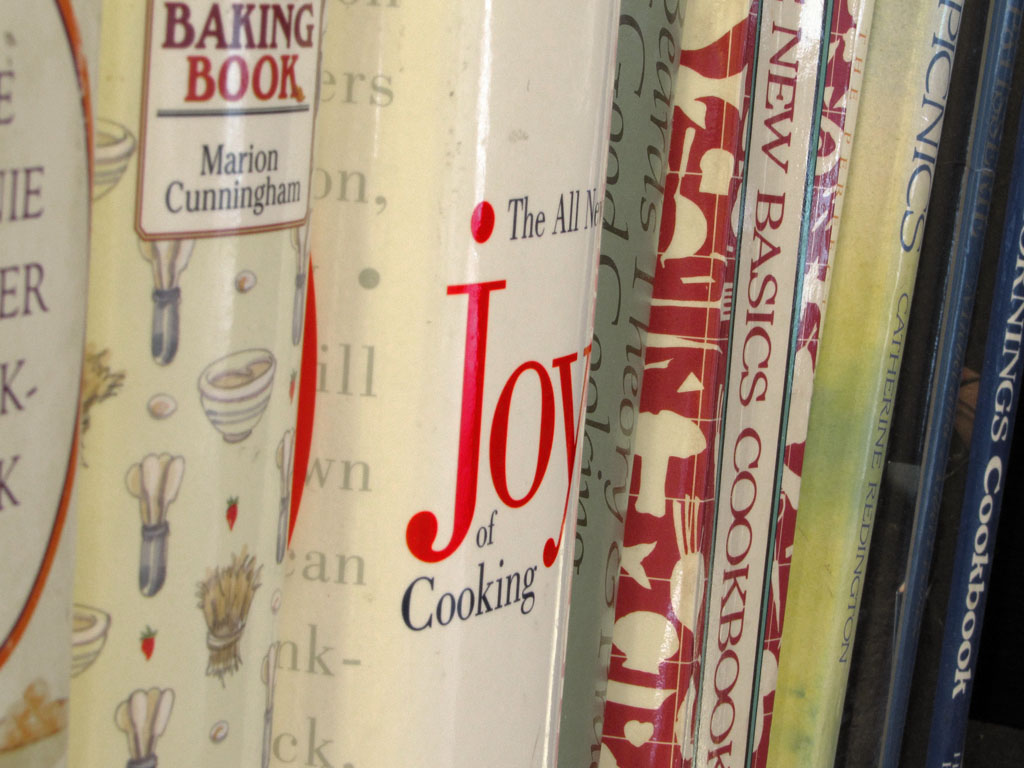Reading Lists
8 Cookbooks You Can Read Like…Books
From histories to family secrets, some of the most delicious tales around can be found between the recipes

It’s easy to find recipes. Thousands of tips for the gooiest chocolate chip cookies and YouTube tutorials for how to ensure, this year, your turkey won’t be dry, are out there for your taking. And popular as they are, those high-speed cooking videos rob the experience of its ritual, while the increase in on-demand, recipe-in-a-box services means the novice and hobbyist cooks miss out on the the experimenting, discovery and improvising that make the kitchen exciting. It’s led many to wonder about the fate of the cookbook. How quaint, it seems, to crack a spine for your ingredients and instructions.
But cookbooks aren’t always instruction manuals. Often, they tell deeper stories of the dish, whether its the history of the ingredients or the way the author came to the recipe. They draw you into the world of their food, sometimes so much that you get lost in them before you get the chance to get out your frying pan. But also, get out your frying pan, because you’ll want to make everything you find in these books.
Eight Flavors: The Untold Story of American Cuisine by Sarah Lohman
As Lohman states in her introduction, “history has a flavor.” Certain ones evoke certain times, and by tracking American ingredient trends, beginning with black pepper and ending with Sriracha, she tells the story of America, its cuisine, immigration, prejudice and more. You’ll already be inspired to cook with the eight titular flavors (black pepper, vanilla, chili powder, curry powder, soy sauce, garlic, msg and sriracha), but Lohman includes both historical and modern recipes in each chapter, such as Xanath (vanilla) Liqueur, Garam Masala Ice Cream, or Umami Finishing Salt (a.k.a. MSG made from scratch). If America was Already Great, it’s because of this food.
The Smitten Kitchen Cookbook by Deb Perelman
Perelman built her following not just on her amazing recipes and beautiful photography, but with the funny, relatable way she spoke about dealing with small kitchens, picky eaters, and vacillating between being too lazy to cook anything elaborate and deciding to make her friend’s wedding cake. Her first cookbook introduces each recipe with musings on the task at hand, assuring you that gnocchi is not that hard, or telling you how to throw a dinner party and actually enjoy yourself. She’ll have you at peach and sour cream pancakes.

A History of Food in 100 Recipes by William Sitwell
Apocryphally, Napoleon said that the biggest advance in modern warfare was the potato, which allowed armies to cover greater distances now that they had a portable, ready-to-eat source of food. ood, in other words, is never just food. A History of Food in 100 Recipes traces just what we’ve eaten and what it means, from Ancient Egyptian Bread, to the origins of the Cupcake, to rice krispies treats. Not all the recipes are easy to recreate, but for a good time, try to decipher “Fish experiment XIII.”
My Two Souths by Asha Gomez
The two souths chef Gomez refers to are Kerala, India and the American south, two cuisines known for bold, complex flavors that Gomez weaves beautifully into dishes you will dream of just from reading the descriptions. But the way she describes her childhood in India, or her first encounter with Georgian hoecakes, or a dish like “tomato clove preserves” which could easily come from either of her two souths, make this a truly unique cookbook.

The Inspired Vegan by Bryant Terry
Despite vegan food being just as interesting and varied as any other kind for, I don’t know, forever, a lot of people still can’t get over the image of it being all seitan sandwiches and dry quinoa. Terry combines influences from Brooklyn, the Bay Area, and his family’s cuisine in the American south into specific menus, such as “grits, greens, molasses,” an homage to the flavors of the African diaspora, or a dinner to celebrate Shirley Chisholm, the first major-party black candidate for president. He features recipes, but also essays and even soundtracks to put together perfect vegan feasts.
97 Orchard by Jane Ziegelman
What could a building have to say about the history of American cuisine? Jane Ziegelman, the director of the culinary program at New York City’s Tenement Museum, found one that says everything. Her book traces the history of five immigrant groups — Germans, Irish, German Jews, Russian Jews and Italians — through five families who lived in one building, and the food they made that would go on to define a country. Recipes include things like actually good gefilte fish, oyster patties, corned beef, and garlicky pasta that transcended the tenement.
Garlic and Sapphires by Ruth Reichl
Reichl changed the game of restaurant reviews when she became the critic at The New York Times, starting with her iconic review of Le Cirque, in which she disguised herself to showcase how the restaurant catered to the elite and non-elite differently. Her memoir of her time at the Times deserves a read no matter what, but it’s also sprinkled with recipes like risotto primavera, roast leg of lamb, and classic New York cheesecake.
The Artists’ and Writers’ Cookbook by Natalie Eve Garrett
This is as literal a version as you can get of a good story combined with recipes. An updated version of a 1961 collection of the same name, this cookbook features essays, short stories and poems by writers and artists like Neil Gaiman, Francesca Lia Block, and James Franco on the recipes that have defined their lives. If you ever wanted to make scrambled eggs like Joyce Carol Oates, here’s your chance.








